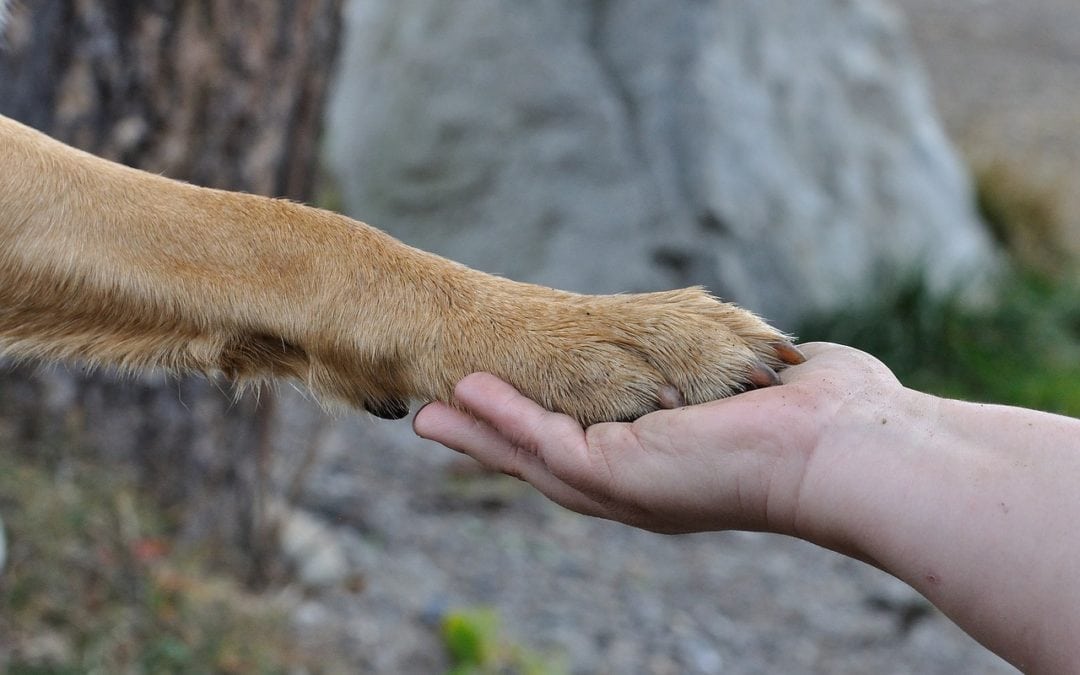Duncan is a diabetic. His owners brought him in because he had lost a lot of weight and was drinking and peeing lots. We did some blood work and a urinalysis to confirm that Duncan was a diabetic, but I was certain before we got the results.
Diabetes mellitus is either an absolute (type I) or relative (type II) insulin deficiency. Type I is permanent. Type II may be transient. The deficiency of insulin means that the pet (or person) cannot use calories well. The decrease in glucose utilization leads to hyperglycemia. This leads to an increase in appetite, breakdown of muscles and fat and weight loss. The increased blood sugar (glucose) also leads to increased sugar in the urine. This osmotic pressure gradient leads to increase urination which is offset by increased drinking.
Duncan had lost almost a third of his body weight and was thin, but he looked great! He ate treats and tried to eat my fingers too. He wagged his tail the whole time. Duncan’s family is busy and his little sister just started kindergarten, but they are willing to do what Duncan needs. I have found that owner education is a key to successful diabetes management.
We start by talking about the goals of therapy. Dogs are not people. In people, we worry about diabetic cataracts and peripheral neuropathy and damage. Nobody wants this and they don’t want it for their pet either. But the complications that we see in humans may take 15 to 20 years to develop. I cannot keep Duncan alive long enough for these issues to be a problem. That is not to say that we should not treat Duncan, we should, but the goal is to avoid diabetic complications and not have him peeing all over the place.
The first complication that we do not want is diabetic ketoacidosis. This is a medical emergency. The lack of insulin causes the glucose to skyrocket. The body creates ketone bodies as an emergency fuel source. But breaking down ketones create byproducts that shift the acid/base balance. Acidosis leads to severe dehydration. The overall electrolyte imbalance can cause heart arrhythmias, heart function abnormalities, kidney failure, brain swelling and even death. Without treatment, this is a real possibility.
Likewise, too much insulin is also dangerous. It drops the blood glucose levels to a dangerously low level. Dogs get lethargic or seizure with too much insulin. This is easily fixed with some high fructose corn syrup (karo syrup), but the pendulum-like swinging of the blood sugar levels is not good.
After the owners have had a bit of time to adjust to the new routine and I have had time to calculate the starting dose, Austin and I took in a bottle of sterile water and an insulin syringe. I start by going over the parts of the syringe. Including the part about don’t stick yourself with the needle. (It will happen.) I demonstrate how to pull the plunger back, inject air into the bottle and then draw up the insulin dose. The insulin must be kept cool and mixed gently to avoid damaging the insulin molecule. It should not be stored upside down for the same reason. The bottle and syringe are turned upside down to withdraw the 6 IU that Duncan will start on. With Austin coaching, both owners practiced making a skin tent and injecting the sterile water. Duncan did well and so did his parents.
Duncan is a diabetic. He will be on a routine of twice a day feeding with twice a day injections of insulin. In two weeks, he will come in for a series of blood sugar readings throughout the day. This glucose curve will help me determine how to adjust Duncan’s insulin. If we need, we will put him on a special diet. Duncan is a diabetic, but there is no reason, he cannot live out his normal, happy lifespan.

